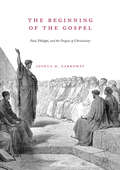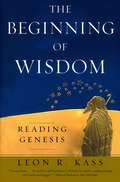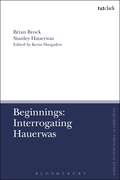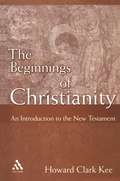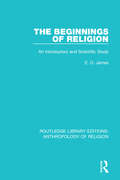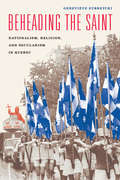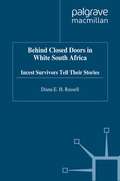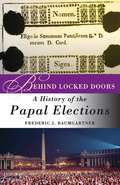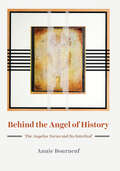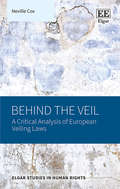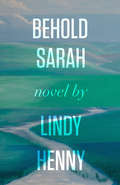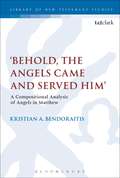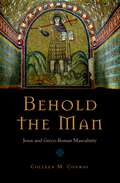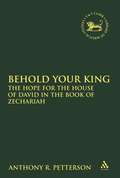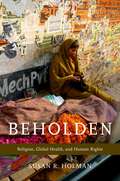- Table View
- List View
The Beginning of the Gospel: Paul, Philippi, and the Origins of Christianity
by Joshua D. GarrowayIn this innovative study, Joshua D. Garroway offers a revised account of the origin of the all-important Christian word “gospel,” yielding significant new insights into the development of early Christian history and literature. Long thought to have originated on the lips of Jesus or his disciples, “gospel” was in fact coined by Paul midway through his career to describe his controversial new interpretation of Jesus’ death and resurrection. For nearly a decade after the crucifixion, the thoroughly Jewish Jesus movement demanded circumcision and Law observance from Gentile converts. Only in the early 40s did Paul arrive at the belief that such observance was no longer necessary, an insight he dubbed “the gospel,” or good news. The remainder of Paul’s career featured clashes with authorities over the legitimacy of the gospel, debates that continued after his death in the writings of Mark, Matthew, and Luke-Acts. These writings obscured the original context of the gospel, however, and in time the word lost its specific association with Paul and his scandalous notion of salvation outside the Law.
The Beginning of Wisdom: Reading Genesis
by Leon R. KassAs ardent debates over creationism fill the front pages of newspapers, Genesis has never been more timely. And as Leon R. Kass shows in The Beginning of Wisdom, it’s also timeless. Examining Genesis in a philosophical light, Kass presents it not as a story of what happened long ago, but as the enduring story of humanity itself. He asserts that the first half of Genesis contains insights about human nature that “rival anything produced by the great philosophers.” Kass here reads these first stories—from Adam and Eve to the tower of Babel—as a mirror for self-discovery that reveals truths about human reason, speech, freedom, sexual desire, pride, shame, anger, and death. Taking a step further in the second half of his book, Kass explores the struggles in Genesis to launch a new way of life that addresses mankind’s morally ambiguous nature by promoting righteousness and holiness. Even readers who don’t agree with Kass’s interpretations will find The Beginning of Wisdom acompelling book—a masterful philosophical take on one of the world’s seminal religious texts. “Extraordinary. . . . Its analyses and hypotheses will leave no reader’s understanding of Genesis unchanged.” —New York Times “A learned and fluent, delightfully overstuffed stroll through the Gates of Eden. . . . Mix Harold Bloom with Stephen Jay Gould and you’ll get something like Kass. A wonderfully intelligent reading of Genesis.”—Kirkus Reviews, starred review “Throughout his book, Kass uses fruitful, fascinating techniques for getting at the heart of Genesis. . . . Innumerable times [he] makes a reader sit back and rethink what has previously been tediously familiar or baffling.”—Washington Post “It is important to state that this is a book not merely rich, but prodigiously rich with insight. Kass is a marvelous reader, sensitive and careful. His interpretations surprise again and again with their cogency and poignancy.”—Jerusalem Post
Beginnings: Interrogating Hauerwas (T&T Clark Enquiries in Theological Ethics #2)
by Brian Brock Stanley Hauerwas Kevin HargadenStanley Hauerwas is arguably the most well-known figure in theological ethics of the last generation. Having published voluminously over the last 30 years, late in his career he has also published two volumes of essays discussing his corpus retrospectively, as well as a widely acclaimed memoir. The sheer volume of his work can be daunting to readers, and it is easy to get the impression that his retrospective volumes are restating positions developed earlier. Brian Brock delves into Hauerwas' formation as a theologian at Yale, his first book, Character and the Christian Life, and examines some of his early, and outspoken, criticisms of the guild of Christian ethics. This chapter is followed by a discussion of his memoir, Hannah's Child, and raises tricky questions about the role of autobiography in Christian ethics, as well as the troubling problem of race in the modern academy. Brock explores Hauerwas' work on disability, his criticisms of the discipline of medical ethics, and the role played by vulnerability in his work. The next chapter examines his views on just war and pacifism, here probing the sensitive issue of the role of gender in his work, and leading into a discussion on the nature of the church's peaceable politics, in which his supposed hyper-ecclesiocentricism is examined. Brock examines the role of virtue in Hauerwas' thought, and teases out why he hates to be called a virtue ethicist. A final chapter asks him to respond to the recently levelled criticism that scripture does no work in his theology, focusing especially on his under-appreciated commentary on the gospel of Matthew.The editor of this volume has managed to maneuver Hauerwas into positions where he has directly faced tricky questions that he normally does not discuss, such as the accusation that he is racist, too soft on Yoder, or misogynist.
Beginnings: Interrogating Hauerwas (T&T Clark Enquiries in Theological Ethics #2)
by Kevin Hargaden Dr Brian Brock Stanley HauerwasStanley Hauerwas is arguably the most well-known figure in theological ethics of the last generation. Having published voluminously over the last 30 years, late in his career he has also published two volumes of essays discussing his corpus retrospectively, as well as a widely acclaimed memoir. The sheer volume of his work can be daunting to readers, and it is easy to get the impression that his retrospective volumes are restating positions developed earlier. Brian Brock delves into Hauerwas' formation as a theologian at Yale, his first book, Character and the Christian Life, and examines some of his early, and outspoken, criticisms of the guild of Christian ethics. This chapter is followed by a discussion of his memoir, Hannah's Child, and raises tricky questions about the role of autobiography in Christian ethics, as well as the troubling problem of race in the modern academy. Brock explores Hauerwas' work on disability, his criticisms of the discipline of medical ethics, and the role played by vulnerability in his work. The next chapter examines his views on just war and pacifism, here probing the sensitive issue of the role of gender in his work, and leading into a discussion on the nature of the church's peaceable politics, in which his supposed hyper-ecclesiocentricism is examined. Brock examines the role of virtue in Hauerwas' thought, and teases out why he hates to be called a virtue ethicist. A final chapter asks him to respond to the recently levelled criticism that scripture does no work in his theology, focusing especially on his under-appreciated commentary on the gospel of Matthew.The editor of this volume has managed to maneuver Hauerwas into positions where he has directly faced tricky questions that he normally does not discuss, such as the accusation that he is racist, too soft on Yoder, or misogynist.
The Beginnings of Christianity: An Introduction to the New Testament
by Howard Clark KeeTo understand the historical beginnings of Christianityrequires one not only to examine the documents that the movement produced, but also toscrutinize other evidence-historical, literary, and archaeological-that can illumine thesocio-cultural context in which Christianity began and how it responded to the influencesthat derived from that setting. This involves not only analysis of the readily accessiblecontent of the relevant literary evidence, but also attention to the world-views andassumptions about reality that are inherent in these documents and other phenomena thathave survived from this period. Attention to the roles of leadership and the modes offormation of social identity in Judaism and the continuing influence of these developments as Christianity began to take shape is important for historical analysis. Distinguished New Testament scholar Kee performs such readings of the texts and communities in this dazzling study of early Christian origins. In methodological terms, the historical study of Christian Origins in all its diversity must involve three different modes of analysis: (1) epistemological, (2) sociological, and (3) eschatological. The first concerns the way in which knowledge and communication of it were perceived. The second seeks to discern the way in which the community or tradition preserving and conveying this information defined its group identity and its shared values and aims. The third focuses on the way in which the group understood and affirmed its ultimate destiny and that of its members in the purpose of God. These factors are interrelated, and features of one mode of perception strongly influence details of the others, but it is useful to consider each of them in its own category in order to discern with greater precision the specific historical features of the spectrum of facets which appear in the evidence that has survived concerning the origins of Christianity.
The Beginnings of Christianity: An Introduction to the New Testament
by Howard Clark KeeTo understand the historical beginnings of Christianityrequires one not only to examine the documents that the movement produced, but also toscrutinize other evidence-historical, literary, and archaeological-that can illumine thesocio-cultural context in which Christianity began and how it responded to the influencesthat derived from that setting. This involves not only analysis of the readily accessiblecontent of the relevant literary evidence, but also attention to the world-views andassumptions about reality that are inherent in these documents and other phenomena thathave survived from this period. Attention to the roles of leadership and the modes offormation of social identity in Judaism and the continuing influence of these developments as Christianity began to take shape is important for historical analysis. Distinguished New Testament scholar Kee performs such readings of the texts and communities in this dazzling study of early Christian origins. In methodological terms, the historical study of Christian Origins in all its diversity must involve three different modes of analysis: (1) epistemological, (2) sociological, and (3) eschatological. The first concerns the way in which knowledge and communication of it were perceived. The second seeks to discern the way in which the community or tradition preserving and conveying this information defined its group identity and its shared values and aims. The third focuses on the way in which the group understood and affirmed its ultimate destiny and that of its members in the purpose of God. These factors are interrelated, and features of one mode of perception strongly influence details of the others, but it is useful to consider each of them in its own category in order to discern with greater precision the specific historical features of the spectrum of facets which appear in the evidence that has survived concerning the origins of Christianity.
The Beginnings of Religion: An introductory and Scientific Study (Routledge Library Editions: Anthropology of Religion #1)
by E.O. JamesIn this book, first published in 1948, an attempt has been made to provide an intelligible introduction to a somewhat complex aspect of scientific inquiry. And secondly, to construct a background of ‘primitive’ ritual and belief against which the more developed religions can be placed. This book is a valuable, early attempt at explaining the beginnings of religion from a modern scientific viewpoint.
The Beginnings of Religion: An introductory and Scientific Study (Routledge Library Editions: Anthropology of Religion #1)
by E.O. JamesIn this book, first published in 1948, an attempt has been made to provide an intelligible introduction to a somewhat complex aspect of scientific inquiry. And secondly, to construct a background of ‘primitive’ ritual and belief against which the more developed religions can be placed. This book is a valuable, early attempt at explaining the beginnings of religion from a modern scientific viewpoint.
Beheading the Saint: Nationalism, Religion, and Secularism in Quebec
by Geneviève ZubrzyckiThrough much of its existence, Québec’s neighbors called it the “priest-ridden province.” Today, however, Québec society is staunchly secular, with a modern welfare state built on lay provision of social services—a transformation rooted in the “Quiet Revolution” of the 1960s. In Beheading the Saint, Geneviève Zubrzycki studies that transformation through a close investigation of the annual Feast of St. John the Baptist of June 24. The celebrations of that national holiday, she shows, provided a venue for a public contesting of the dominant ethno-Catholic conception of French Canadian identity and, via the violent rejection of Catholic symbols, the articulation of a new, secular Québécois identity. From there, Zubrzycki extends her analysis to the present, looking at the role of Québécois identity in recent debates over immigration, the place of religious symbols in the public sphere, and the politics of cultural heritage—issues that also offer insight on similar debates elsewhere in the world.
Beheading the Saint: Nationalism, Religion, and Secularism in Quebec
by Geneviève ZubrzyckiThrough much of its existence, Québec’s neighbors called it the “priest-ridden province.” Today, however, Québec society is staunchly secular, with a modern welfare state built on lay provision of social services—a transformation rooted in the “Quiet Revolution” of the 1960s. In Beheading the Saint, Geneviève Zubrzycki studies that transformation through a close investigation of the annual Feast of St. John the Baptist of June 24. The celebrations of that national holiday, she shows, provided a venue for a public contesting of the dominant ethno-Catholic conception of French Canadian identity and, via the violent rejection of Catholic symbols, the articulation of a new, secular Québécois identity. From there, Zubrzycki extends her analysis to the present, looking at the role of Québécois identity in recent debates over immigration, the place of religious symbols in the public sphere, and the politics of cultural heritage—issues that also offer insight on similar debates elsewhere in the world.
Beheading the Saint: Nationalism, Religion, and Secularism in Quebec
by Geneviève ZubrzyckiThrough much of its existence, Québec’s neighbors called it the “priest-ridden province.” Today, however, Québec society is staunchly secular, with a modern welfare state built on lay provision of social services—a transformation rooted in the “Quiet Revolution” of the 1960s. In Beheading the Saint, Geneviève Zubrzycki studies that transformation through a close investigation of the annual Feast of St. John the Baptist of June 24. The celebrations of that national holiday, she shows, provided a venue for a public contesting of the dominant ethno-Catholic conception of French Canadian identity and, via the violent rejection of Catholic symbols, the articulation of a new, secular Québécois identity. From there, Zubrzycki extends her analysis to the present, looking at the role of Québécois identity in recent debates over immigration, the place of religious symbols in the public sphere, and the politics of cultural heritage—issues that also offer insight on similar debates elsewhere in the world.
Beheading the Saint: Nationalism, Religion, and Secularism in Quebec
by Geneviève ZubrzyckiThrough much of its existence, Québec’s neighbors called it the “priest-ridden province.” Today, however, Québec society is staunchly secular, with a modern welfare state built on lay provision of social services—a transformation rooted in the “Quiet Revolution” of the 1960s. In Beheading the Saint, Geneviève Zubrzycki studies that transformation through a close investigation of the annual Feast of St. John the Baptist of June 24. The celebrations of that national holiday, she shows, provided a venue for a public contesting of the dominant ethno-Catholic conception of French Canadian identity and, via the violent rejection of Catholic symbols, the articulation of a new, secular Québécois identity. From there, Zubrzycki extends her analysis to the present, looking at the role of Québécois identity in recent debates over immigration, the place of religious symbols in the public sphere, and the politics of cultural heritage—issues that also offer insight on similar debates elsewhere in the world.
Beheading the Saint: Nationalism, Religion, and Secularism in Quebec
by Geneviève ZubrzyckiThrough much of its existence, Québec’s neighbors called it the “priest-ridden province.” Today, however, Québec society is staunchly secular, with a modern welfare state built on lay provision of social services—a transformation rooted in the “Quiet Revolution” of the 1960s. In Beheading the Saint, Geneviève Zubrzycki studies that transformation through a close investigation of the annual Feast of St. John the Baptist of June 24. The celebrations of that national holiday, she shows, provided a venue for a public contesting of the dominant ethno-Catholic conception of French Canadian identity and, via the violent rejection of Catholic symbols, the articulation of a new, secular Québécois identity. From there, Zubrzycki extends her analysis to the present, looking at the role of Québécois identity in recent debates over immigration, the place of religious symbols in the public sphere, and the politics of cultural heritage—issues that also offer insight on similar debates elsewhere in the world.
Beheading the Saint: Nationalism, Religion, and Secularism in Quebec
by Geneviève ZubrzyckiThrough much of its existence, Québec’s neighbors called it the “priest-ridden province.” Today, however, Québec society is staunchly secular, with a modern welfare state built on lay provision of social services—a transformation rooted in the “Quiet Revolution” of the 1960s. In Beheading the Saint, Geneviève Zubrzycki studies that transformation through a close investigation of the annual Feast of St. John the Baptist of June 24. The celebrations of that national holiday, she shows, provided a venue for a public contesting of the dominant ethno-Catholic conception of French Canadian identity and, via the violent rejection of Catholic symbols, the articulation of a new, secular Québécois identity. From there, Zubrzycki extends her analysis to the present, looking at the role of Québécois identity in recent debates over immigration, the place of religious symbols in the public sphere, and the politics of cultural heritage—issues that also offer insight on similar debates elsewhere in the world.
Behind Closed Doors in White South Africa: Incest Survivors Tell their Stories
by D. RussellThe intent in this book is to tear away the veil of secrecy that surrounds incestuous abuse in white South Africa by presenting five in-depth personal accounts of this heinous form of sexual exploitation as told by the survivors. Each of these accounts includes an analysis of important incest-related issues raised by the survivor's story. Another objective is to explore the connections between the often cruel sexual exploitation of girls by their white male relatives and the brutal exploitation of black people by white men in South Africa.
Behind Locked Doors: A History of the Papal Elections
by F. Baumgartner McNamaraSince 1600, whenever a Pope dies, the Cardinals of the Roman Catholic Church convene in Rome to elect a successor. The Papal Conclave is an event like no other. Highly secret and conducted behind the locked doors of the Sistine Chapel, it happens about eight times every century. It is an event that has evolved over the centuries and is always filled with high drama: cardinals meeting en masse in their scarlet robes, throngs of the faithful standing watch in St. Peter's Square, the black or white smoke billowing from the chimney signalling the election of a new Pontiff Since secrecy was not heavily invoked until the twentieth century, there is a vast store of rich material to work from and Fred Baumgartner uses it to its utmost detailing the bickering and blatant politicking that goes on behind the locked doors of the Sistine Chapel in this important and timely book.
Behind the Angel of History: The "Angelus Novus" and Its Interleaf
by Annie BourneufThe story of artist R. H. Quaytman’s discovery of an engraving hidden behind a famous artwork by Paul Klee. This book begins with artist R. H. Quaytman uncovering something startling about a picture by Paul Klee. Pasted beneath Klee’s 1920 Angelus Novus—famous for its role in the writings of its first owner, Walter Benjamin—Quaytman found that Klee had interleaved a nineteenth-century engraving of Martin Luther, leaving just enough visible to provoke questions. Behind the Angel of History reveals why this hidden face matters, delving into the intertwined artistic, political, and theological issues consuming Germany in the wake of the Great War. With the Angelus Novus, Klee responded to a growing call for a new religious art. For Benjamin, Klee’s Angelus became bound up with the prospect of meaningful dialogue among religions in Germany. Reflecting on Klee’s, Benjamin’s, and Quaytman’s strategies of superimposing conflicting images, Annie Bourneuf reveals new dimensions of complexity in this iconic work and the writing it inspired.
Behind the Angel of History: The "Angelus Novus" and Its Interleaf
by Annie BourneufThe story of artist R. H. Quaytman’s discovery of an engraving hidden behind a famous artwork by Paul Klee. This book begins with artist R. H. Quaytman uncovering something startling about a picture by Paul Klee. Pasted beneath Klee’s 1920 Angelus Novus—famous for its role in the writings of its first owner, Walter Benjamin—Quaytman found that Klee had interleaved a nineteenth-century engraving of Martin Luther, leaving just enough visible to provoke questions. Behind the Angel of History reveals why this hidden face matters, delving into the intertwined artistic, political, and theological issues consuming Germany in the wake of the Great War. With the Angelus Novus, Klee responded to a growing call for a new religious art. For Benjamin, Klee’s Angelus became bound up with the prospect of meaningful dialogue among religions in Germany. Reflecting on Klee’s, Benjamin’s, and Quaytman’s strategies of superimposing conflicting images, Annie Bourneuf reveals new dimensions of complexity in this iconic work and the writing it inspired.
Behind the Veil: A Critical Analysis of European Veiling Laws (Elgar Studies in Human Rights)
by Neville CoxSince the early 2010s, an increasing number of European countries have passed laws that prohibit the wearing of various kinds of Islamic veil in particular circumstances. This insightful book considers the arguments used to justify such laws and analyses the legitimacy of these arguments both generally and in regards to whether such laws can be seen as justified interferences with the rights of women who wish to wear such garments. This timely book considers the most recently passed European laws that target Islamic veiling. The author situates the justifications for anti-veiling laws in the context of a careful analysis of the reasons why women wear veils, and considers these justifications by reference to emerging debates surrounding the relative value of liberalism and human rights, multiculturalism, and the need to protect ‘traditional values’. The book concludes that these laws are best viewed as symbolic strikes at a recognisable symbol of an ideological opponent, theorising that their principal purpose is to enable particular countries to reaffirm traditional values in a context of increased domestic opposition to multiculturalism. This engaging work will be valuable reading for students and scholars of human rights law, Islamic law and those interested specifically in the laws and regulations surrounding Islamic veiling around the world.
Behold Sarah
by Lindy HennySarah's autobiography will interest anyone who is curious about life's meaning, the value of self-discovery, and the search for some form of God. It is, in itself, a blueprint of self-analysis, and at the same time a description of Sarah's raw, rich life, and her restoration from despair to wanting to live. In reading 'Behold Sarah' you will time travel with her through her singular, often murky, ever emerging past. She shares her story with an italicisedgod - but whose voice are we actually hearing? Perhaps Sarah's voice and God's are one and the same. Prepare to float on the flotsam-jetsam Thames, be guided through quirky parts of London, be banged up blissfully in a high security prison, fall in and out of love, and out and into sex , and, deep breath, find yourself in the painfully comfortable paradox of the therapy room. I, Lindy Henny (like Sarah in many respects!) am a psychotherapist, and an author. I love to write in different styles and genres - plays, poetry, novels, both profane and sacred. Accompanying Sarah on her journey, she and I spend time in an imaginary place which she calls The Hut, or The Willow Cabin; there we reflect and ponder on such things as old age, adoption, sex, love, writing poetry, relationships, croquet and tennis. I hope you enjoy 'Behold Sarah', and might be encouraged to 'Behold Yourself' and like Sarah find understanding, meaning, and whatever it is you are seeking.
'Behold, the Angels Came and Served Him': A Compositional Analysis of Angels in Matthew (The Library of New Testament Studies #523)
by Kristian A. BendoraitisAngels have been analyzed in Christological research due to their primary function as messengers and mediators between heaven and earth. Their role in the Gospel narratives, however, has been largely unexplored.Utilizing the Old Testament and sources from the Second Temple period to illustrate the variety of angel traditions, Bendoraitis identifies how these traditions are reflected in Matthew's Gospel and interprets the passages in which angels appear or are represented, resulting in a detailed exegesis of those passages which specifically mention angels. Each reference is critically analyzed in view of its role in the Gospel's narrative and in light of Matthew's redactional hand. In addition, each chapter is accompanied by a discussion of relevant traditions of angels in order to illustrate how Matthew's use of angels has facilitated his Gospel's message. The examination concludes by postulating three factors in the inclusion of angel traditions in Matthew's narrative, pertaining both to Matthew's Christology and worldview.
Behold the Man: Jesus and Greco-Roman Masculinity
by Colleen ConwayIn this book, Colleen Conway looks at the construction of masculinity in New Testament depictions of Jesus. She argues that the New Testament writers necessarily engaged the predominant gender ideology of the Roman Empire, whether consciously or unconsciously. Although the notion of what constituted ideal masculinity in Greek and Roman cultures certainly pre-dated the Roman Empire, the emergence of the Principate concentrated this gender ideology on the figure of the emperor. Indeed, critical to the success of the empire was the portrayal of the emperor as the ideal man and the Roman citizen as one who aspired to be the same. Any person who was held up alongside the emperor as another source of authority would be assessed in terms of the cultural values represented in this Roman image of the "manly man." Conway examines a variety of ancient ideas of masculinity, as found in philosophical discourses, medical treaties, imperial documents, and ancient inscriptions. Manliness, in these accounts, was achieved through self-control over passions such as lust, anger, and greed. It was also gained through manly displays of courage, the endurance of pain, and death on behalf of others. With these texts as a starting point, Conway shows how the New Testament writings approach Jesus' gender identity. From Paul's early letters to the Gospels and Acts, to the book of Revelation, Christian writings in the Bible confront the potentially emasculating scandal of the cross and affirm Jesus as ideally masculine. Conway's study touches on such themes as the relationship between divinity and masculinity; the role of the body in relation to gender identity; and belief in Jesus as a means of achieving a more ideal form of masculinity. This impeccably researched and highly readable book reveals the importance of ancient gender ideology for the interpretation of Christian texts.
Behold Your King: The Hope For the House of David in the Book of Zechariah (The Library of Hebrew Bible/Old Testament Studies)
by Anthony Robert PettersonThis book investigates the nature of the hope for the house of David in the final form of the book of Zechariah. It focuses particularly on the following themes: the roles of Joshua and Zerubbabel; the nature and identity of the Shoot; the coming King; the Shepherd; and the Pierced One. It challenges the scholarly consensus, going back to the thesis of Julius Wellhausen, that the high priest took over the role and prerogatives of the pre-exilic monarch in the early post-exilic period. Instead, Zechariah merely envisages Joshua the high priest being reinstated to the temple duties that were undertaken before the exile. Furthermore, Zechariah does not identify Zerubbabel as the promised future Davidic king ("Shoot"). Rather, Zechariah demonstrates a hope for the restoration of a Davidic king who will have a key role in temple building after the time of Zerubbabel. The belief that Zechariah 9-11 and 12-14 are oracles that seek to reinterpret prophecies that have become problematic is also challenged. There is no strong evidence that the hope for the house of David in Zechariah 9-14 contradicts the presentation of Zechariah 1-8. This thesis shows how these later chapters continue and develop many of the themes related to the Davidic hope in Zechariah 1-8.The picture of the Davidic hope that emerges from the book of Zechariah is consistent with the expectations of earlier prophets and confirms that the book, when read as a whole, provides a strong impetus for later messianism in the post-exilic period.
Beholden: Religion, Global Health, and Human Rights
by Susan R. HolmanWinner of the 2016 Grawemeyer Award in Religion Global health efforts today are usually shaped by two very different ideological approaches: a human rights-based approach to health and equity-often associated with public health, medicine, or economic development activities; or a religious or humanitarian "aid" approach motivated by personal beliefs about charity, philanthropy, missional dynamics, and humanitarian "mercy." The underlying differences between these two approaches can create tensions and even outright hostility that undermines the best intentions of those involved. In Beholden: Religion, Global Health, and Human Rights, Susan R. Holman--a scholar in both religion and the history of medicine--challenges this traditional polarization by telling stories designed to help shape a new perspective on global health, one that involves a multidisciplinary integration of religion and culture with human rights and social justice. The book's six chapters range broadly, describing pilgrimage texts in the Christian, Hindu, Buddhist, and Islamic traditions; the effect of ministry and public policy on nineteenth-century health care for the poor; the story of the Universal Declaration of Human Rights as it shaped economic, social, and cultural rights; a "religious health assets" approach based in Southern Africa; and the complex dynamics of gift exchange in the modern faith-based focus on charity, community, and the common good. Holman's study serves as an insightful guide for students and practitioners interested in improving and broadening the scope of global health initiatives, with an eye towards having the greatest impact possible.
BEHOLDEN RELIGION C: Religion, Global Health, and Human Rights
by Susan R. HolmanWinner of the 2016 Grawemeyer Award in Religion Global health efforts today are usually shaped by two very different ideological approaches: a human rights-based approach to health and equity-often associated with public health, medicine, or economic development activities; or a religious or humanitarian "aid" approach motivated by personal beliefs about charity, philanthropy, missional dynamics, and humanitarian "mercy." The underlying differences between these two approaches can create tensions and even outright hostility that undermines the best intentions of those involved. In Beholden: Religion, Global Health, and Human Rights, Susan R. Holman--a scholar in both religion and the history of medicine--challenges this traditional polarization by telling stories designed to help shape a new perspective on global health, one that involves a multidisciplinary integration of religion and culture with human rights and social justice. The book's six chapters range broadly, describing pilgrimage texts in the Christian, Hindu, Buddhist, and Islamic traditions; the effect of ministry and public policy on nineteenth-century health care for the poor; the story of the Universal Declaration of Human Rights as it shaped economic, social, and cultural rights; a "religious health assets" approach based in Southern Africa; and the complex dynamics of gift exchange in the modern faith-based focus on charity, community, and the common good. Holman's study serves as an insightful guide for students and practitioners interested in improving and broadening the scope of global health initiatives, with an eye towards having the greatest impact possible.
